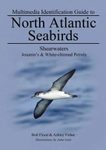![Common & Spotted Sandpipers Common & Spotted Sandpipers]()
Click to have a closer look
About this book
Customer reviews
Related titles
About this book
This wonderful book describes the fascinating lives of the two most ubiquitous shorebirds in the world. Between them, the Common Sandpiper (Actitis hypoleucos) and Spotted Sandpiper (Actitis macularia) make use of a large part of the world's terrestrial habitat and they exhibit many of the exciting features of shorebirds.
As the birds arrive on the breeding ground, their displays are spectacular and their sounds are an exciting announcement of springtime. Unusually, the Spotted Sandpiper appears to be the only bird in the world where the female is the territory holder, laying many clutches of eggs, while the male of the Common Sandpiper holds the territory, has one mate, and shares most duties.
They stay on the breeding grounds only as long as is essential to reproduce before making a migration southwards to a broad range of non-breeding homes from Central and South America through Africa, India, and eastwards to Australia with vagrants reaching as far as Tristan da Cunha and New Zealand. The Common Sandpiper has also been recorded breeding in East Africa and wintering in Scotland so their flexibility is amazing.
The author has spent over 40 years studying the lives of these fantastic birds and provides a mine of information including their breeding behaviour, migrations, distribution, food sources, habitats and their history from 1950 to 36 million years ago.
This beautiful book will hopefully stimulate others to watch these worldwide birds more appreciatively and add to our knowledge.
Customer Reviews
By: Phil Holland(Author)
168 pages, 60 colour & b/w photos, colour & b/w illustrations, and colour & b/w maps; colour tables
"[...] In summary, this is an excellent book that makes the most of the long-term studies on Common Sandpipers undertaken in the UK by the author, and combines that personal knowledge and experience with a comprehensive summary of the scientific understanding of both species. Perhaps inevitably, given the authors’ experience, the book ends up being much more about Common sandpipers than their spotted cousins, but the book is better for covering both species, rather than just the one. This, coupled with the fact that the two species have a combined range across much of the northern hemisphere and tropics, means that the book is highly internationally relevant, despite most of the detailed information being from the UK. The account is very readable, and well populated with illustrations, graphs and tables that nicely complement the text. Whilst some of graphs could perhaps have benefitted from a bit more attention to design, that is really a minor quibble and I would heartily recommend this book to anyone interested in finding out more about these two fascinating species."
– James Pearce-Higgins, BTO book reviews





































